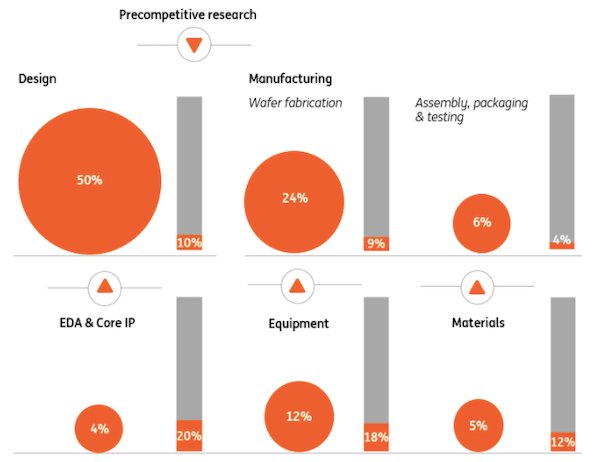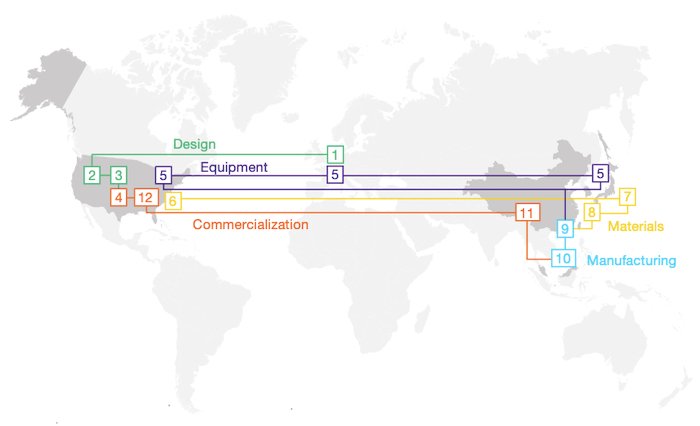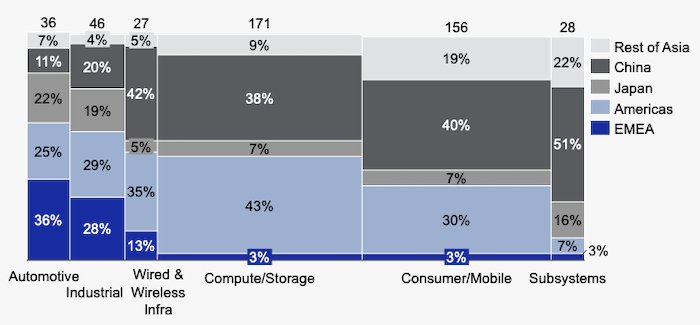Supply chain shortages have rendered hundreds of industries resourceless and unable to manufacture products such as home appliances, automobiles, and more.
To counteract these effects, the U.S. government enacted the CHIPS for America Act in late 2020. Roughly one year later in September 2021, the EU pitched a Chips Act of its own, also with the goal of easing semiconductor shortages.
Now, this proposal has finally been pushed through with the EU officially announcing the enactment of its very own Chips Act. In this article, we’ll discuss the terms of the act and what its repercussions could be both in Europe and globally.
Goals for the EU Chip Act
According to the proposal set forth by the European Commission, the European Chips Act was born out of a realization that Europe’s share of the global semiconductor market (~8%) is well below its economic standing. Member states then agreed to fortify "the processor and semiconductor ecosystem" and to enlarge industrial manufacturing across the supply chain. The overarching goal of this initiative is to remedy technological, security, and societal setbacks resulting from the pandemic.

In this diagram, the circles represent Europe's market share of value chain steps (in total value-added) vs. the rest of the world per value chain step (bar). Image used courtesy of ING Research
As described in the proposal, the EU Chips Act will seek to achieve a number of strategic objectives:
- Strengthen research and technology leadership
- Build and reinforce European capacity to innovate in the design, manufacturing, and packaging of advanced semiconductors
- Establish a framework to increase production capacity substantially by 2030
- Address the acute skills shortage by supporting and attracting new talent
- Create a strong knowledge base of global semiconductor supply chains
To put a quantifiable number to their efforts, the Commission has presented the ultimate goal of ensuring that by 2030, the EU will account for at least 20% of the world’s cutting-edge, sustainable semiconductor production.
Achieving the Objectives of the Chip Act
In order to achieve these goals, the Commission will rely heavily on the close collaboration of all of its members as well as substantial financial investments.
The EU plans on investing over 43 billion euros (over $49 billion) by 2040, which will require pooling investments from the Union, Member States, and private actors. As the plan states currently, the public investment will be roughly EUR 11 billion ($12.5 billion). With this investment, the Commission plans to invest in next-generation technologies with respect to research as well as equipment manufacturing.

Today’s semiconductor supply chain is global by nature—as seen in this journey for a smartphone's application processor. Image used courtesy of ASML
The plan explicitly states goals to develop a new virtual platform for supporting the design infrastructure of ICs through EDA tools. This initiative, known as the “Chips Joint Undertaking,” aims to bring together chip producers, users, and subject matter experts to lead innovation as well as attract and foster new talent in the industry. Some specific technologies cited in the proposal include FDSOI (10nm and below), leading-edge nodes (below 2nm), and 3D heterogeneous systems integration and advanced packaging.
So far, large private European players, such as ASML, have voiced their support for the act, vowing to support and aid in its fruition.
Impact in Europe and Abroad
Part of the new act includes the Chips for Europe Initiative, designed to deploy advanced semiconductor design tools, prototypes of new chips, and testing facilities for new chip technologies.
It's possible that Europe's vow to invest billions of dollars into research, design, and manufacturing—along with America’s renewed investment into semiconductors through the CHIPS for America Act—will help the global semiconductor industry rebound while improving future supply chain security. ING Research analysts assert that chips based on RISC-V could sidestep existing patented architectures in favor of open-source licenses, allowing Europe to become "less dependent on patented designs from abroad."

Breakdown of semiconductor markets by region. Image used courtesy of ASML
The EU has not yet set a date for the Chips Act to enter into force. The European Parliament, Council, and Commission will discuss the proposed regulation, along with co-legislators, to agree on a date "as soon as possible."
